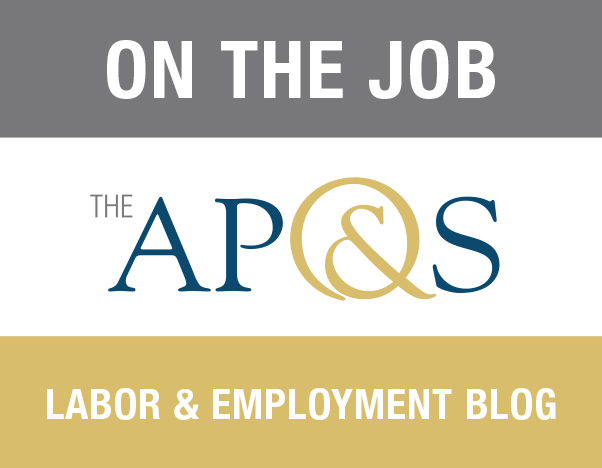Rhode Island has recently joined seven (7) states, including neighboring Massachusetts and Connecticut, in enacting a paid “sick and safe” leave law. The law applies, in one way or another, to most Rhode Island employers. Known as the “Healthy and Safe Families and Workplace Act,” the new law requires employers with 18 or more employees to provide paid sick leave, as well as paid leave for employees needing time off to address domestic violence matters. Employers who have fewer than 18 employees are exempt from having to provide paid leave. However, their employees are protected from being terminated solely because they have utilized the same amount of unpaid sick and safe leave granted as paid leave to employees of larger employers.
Key provisions of the new sick and safe leave law, which takes effect July 1, 2018, include the following:
Accrual and Carry-Over
Under the new law, covered employees accrue a minimum of one hour of paid sick and safe leave for every 35 hours worked, up to a maximum of 24 hours in 2018, 32 hours in 2019, and 40 hours in 2020 and thereafter. Paid leave begins to accrue “at the commencement of employment or pursuant to the law’s effective date, which is later.” Employers may impose a waiting period of up to 90 days on new hires before the accrued leave may be used. Seasonal employees must wait 150 days before discharging accrued leave, and temporary employees must wait 180 days.
The new law provides for carry-over of accrued sick and safe leave to the following calendar year, but an employee’s use of paid leave may not exceed 24 hours during calendar year 2018, 32 hours during calendar year 2019, and 40 hours during calendar year 2020 and thereafter. Alternatively, in lieu of carry-over, the employer may pay out the unused time at the end of a year, but the employer must then provide the employee with the amount of leave required by the new law and make it available for immediate use at the beginning of the next year.
Employers looking to avoid the headache of tracking accrual of paid leave and allowing carry-over may put in place a paid leave policy that provides the annual minimum amount of paid time “up front.” A paid time off policy that provides employees with a “bucket” of 40 hours annually, for instance, would satisfy the law and eliminate both the tracking of accrued time from payroll to payroll period and the carry-over requirement.
Employers may have different leave policies for different groups of employees, so long as all policies meet the minimum requirements of the new law. Employers also have the option of avoiding tracking/carry-over challenges by allocating lump sums of leave to employees, which will satisfy the law even if an employee’s hours vary from week to week. If this option is chosen, then leave must accrue as follows:
Average Hours Per Week Lump Sum/Period of Employment
37.5-40 8 hours/month for 5 months
30 5 hours/month for 8 months
24 4 hours/month for 10 months
20 4 hours/month for 9 months
16 3 hours/month for 10 months
10 2 hours/month for 10 months
5 1 hour/month for 10 months
Also, employers with full-time employees whose regular work day is less than 8 hours will be deemed compliant with the law if employees receive a “bucket” of 5 days (defined by the normal number of hours in a work day) at the beginning of the year.
Covered Employers
Virtually all employers are covered by the new law. The Fair Labor Standards Act and regulations promulgated thereunder, as well as state labor laws, are to be referenced in determining whether an employer has 18 employees (and, therefore, must provide leave that is paid).
Covered Employees
Virtually all employees appear to be covered by the new law, including part-time employees and some temporary and seasonal employees. However, nurses in health care facilities who (a) do not work a regular schedule, (b) work only when they are available, and (c) are paid more than nurses who work a regular schedule in that facility are not entitled to paid sick and safe leave under the new law. Also, work-study participants, certain apprentices, and interns, all as defined and referenced in the FLSA, are exempt.
Employees exempt from overtime under the FLSA will be assumed to work 40 hours per week and will accrue leave on that basis, unless their normal work week is fewer than 40 hours, in which case leave will accrue on the actual number of hours normally worked.
Finally, the interplay between the new law and the negotiated sick leave terms of collective bargaining agreements should prove interesting, as the new law makes reference to employees covered by CBAs in the construction industry but does not address how the statutory and negotiated terms are to be applied.
No Pay-Out of Accrued Leave
Unlike vacation pay, which constitutes wages and must be paid out when employment ends, accrued but unused sick leave is effectively forfeited upon separation from employment, whether voluntary, involuntary, or by retirement.
“Portable” Accrued Sick Leave
Sick leave accrual and use rights will “follow” an employee to a new division or location of the same employer, and if the company is acquired, then the successor employer must honor the employees’ accruals and right to use the accrued time. Employees laid off but rehired within 135 days are also entitled to have their accrued time reinstated, and to use the time immediately.
Use of Paid Sick Leave
An employee may use paid sick leave for the employee’s own mental or physical illness, injury or health condition, preventative or diagnostic care or treatment, or for the care of a family member who is ill or in need of preventative or diagnostic care or treatment. An employee may also use paid leave needed when the employee or a family member is a victim of domestic violence, sexual assault or stalking. “Family member” is defined broadly, to include “care recipients,” who are, in turn, defined as including “a person for whom the employee is responsible for providing or arranging health or safety related care, including, but not limited to, helping the person obtain diagnostic, preventive, routine, or therapeutic health treatment or ensuring the person is safe following domestic violence, sexual assault or stalking.”
An employer may not require an employee to find a replacement worker as a condition to allow discharge of accrued time, but the employer and employee may agree that if the employee makes up the time used within the same or the next pay period, then the accrued time need not be applied to the hours missed, and the employer need not pay for the hours not worked.
Employers may require that leave be taken in increments of no more than 4 hours per day. In other words, an employer cannot require that an employee take an entire day for a dentist appointment or court appearance that is not expected to take more than a few hours.
Notice and Documentation
An employee looking to use sick and safe time must provide advance notice if the need is foreseeable and must make a reasonable effort to schedule the use of leave so as not to unduly disrupt the employer’s business operations. For more than 3 consecutive work days of leave, the employer may require reasonable documentation verifying that the leave was used for a purpose covered by the law.
Fraud and Abuse
If an employer discovers fraud or abuse in the use of leave, the employer may discipline the employee, up to and including termination of employment. Paid sick leave may also not be used as an excuse for reporting late for work without an “authorized purpose.” A pattern of leave use around weekends, vacations, or holidays will also support discipline, unless the employee can establish that the leave was legitimately used.
Regulation and Enforcement
The new law requires that the Rhode Island Department of Labor and Training promulgate new regulations that will, hopefully, answer many unanswered questions regarding compliance. Enforcement involves a civil penalty of not less than $100 for the first violation. Penalties for subsequent violations reference the state wage and hour laws and may allow aggrieved employees to sue for lost wages and other relief.
Compliance with the new paid sick and safe leave law is sure to prove challenging as the July 1, 2018 enforcement date approaches. Employers should take a hard look at their current policies for virtually all of their employees and make any necessary changes well before summer arrives and brings with it potential sick leave accrual/tracking/discharge violations that may give rise to costly and time-consuming administrative proceedings and litigation.





